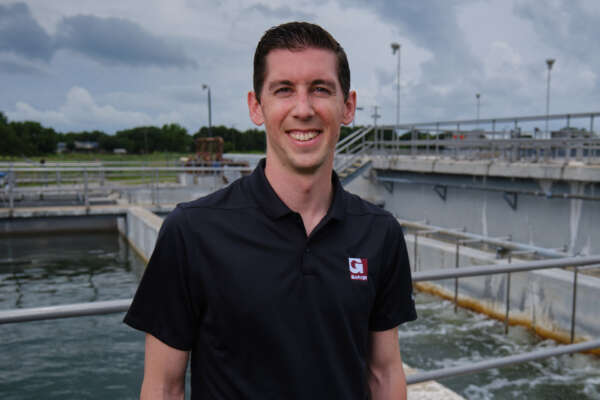Utilities: to best navigate current and future water treatment regulations, look to leading edge research

In 1908, in Jersey City, New Jersey, chlorine was first applied to drinking water for disinfection. Over the next ten years, routine use of chlorine to disinfect drinking water spread, significantly reducing waterborne diseases. And while this was one of the greatest public health achievements of the 20th century, it did not mean that harmful contaminants were completely eliminated, as scientific research would demonstrate in the second half of the century.
Johannes J. Rook’s 1974 publication, “Formation of haloforms during chlorination of natural waters,” identified the presence of disinfection byproducts (DBPs), harmful compounds in drinking water systems formed by chemical reactions between disinfectants and organic or inorganic substances during or after the disinfection process. This groundbreaking research shaped the first United States Environmental Protection Agency (USEPA) regulation of DBPs - the Trihalomethane (THM) Rule, promulgated in 1979.
Over the following decades and into the 21st century, ongoing research continued to push revisions and reviews that have shaped USEPA regulation of 11 of the more than 700 now known DBPs in treated drinking water. These regulations continue to be modified and added to because researchers continue to advance our understanding of DBPs and their toxicity, as we have done in the recently completed Water Research Foundation (WRF) project 5122, “Technologies and Approaches to Minimize Brominated and Iodinated DBPs in Distribution Systems.”
A two-and-a-half-year project led by Garver, in partnership with Clemson University, Southern Nevada Water Agency (SNWA), and the Chinese Academy of Sciences, this is one of the first studies focusing on brominated and iodinated disinfection byproducts from occurrence and treatment perspectives. We studied the occurrence of 37 different brominated and iodinated DBPs, only five of which are currently regulated. Working with 18 participating water plants at 15 utilities in all 10 USEPA regions across the country, we received seasonal raw and distribution water samples, examining those samples for DBP precursors and levels. The sample set included water systems using free chlorine and chloramines for distribution system residual maintenance.
In addition to advancing science-based understanding that will help protect the public from health risks associated with brominated and iodinated DBPs, the findings in this study will influence future USEPA regulation, just as leading edge research has done in the past. Such research drives rule revisions and new regulations, helping USEPA maintain the critical balance between disinfection and disinfection byproduct.
Leading edge research provides frontline protection for safe drinking water, guidance for utilities
Research completed in 2008, “Occurrence and mammalian cell toxicity of iodinated disinfection byproducts in drinking water,” by Susan D. Richardson et al. indicated that some unregulated DBPs, particularly brominated and iodinated DBPs, are more toxic than regulated DBPs, a greater public health risk even at low concentrations. These DBPs are currently being investigated by the National Toxicology Program and are on USEPA’s Contaminant Candidate List, a watchlist of drinking water contaminants identified as those that may, with sufficient occurrence and health risk data, warrant regulation.
It may take another ten years or more before brominated and iodinated DBPs are regulated - it’s not unusual, as the history shows, for research to be ahead of regulation - and in the meantime, thanks to what we have uncovered in WRF project 5122, progressive water utilities interested in lowering treated water DBP levels, particularly brominated and iodinated DBPs, can benefit from the results by seeing which type of treatment approach they can use in their water treatment plants and distribution systems to minimize these more harmful but as yet unregulated DBPs.
We performed bench- and pilot-scale testing of granular activated carbon (GAC), ion exchange (IX), biologically activated carbon (BAC), different pre-oxidation, and ultraviolet (UV) oxidation to examine these treatment technologies’ ability to minimize brominated and iodinated DBPs via removing precursors before DBP formation or by removing DBPs after they are formed. The overlap between these treatment technologies’ capability to control DBPs and PFAS makes the benefit of foresight provided by the research that much greater: there are separate rules for PFAS and DBPs, but utilities will have to comply with both rules eventually.
A utility’s choice of treatment technology is always dependent on a number of factors, and that is why we provide a consideration of the real-world variables utilities must take into account as part of the decision-making process in the study’s guidance to utilities section. Treatment objectives, the appropriateness of technologies, approaches to technology selection, technology design criteria, and cost estimating are all discussed.
We’ve come a long way since 1908, but the work of providing clean, safe drinking water continues. Scientific research paves the way forward, advancing our knowledge and protecting public health. It influences and shapes regulation, and just as importantly, it can provide additional guidelines for utilities, helping them proactively plan for future regulations and deliver the cleanest, safest drinking water possible to the public.
For a comprehensive discussion of our study, its results, and utility guidance, see our full report, “Technologies and Approaches to Minimize Brominated and Iodinated DBPs in Distribution Systems.”









Share this article